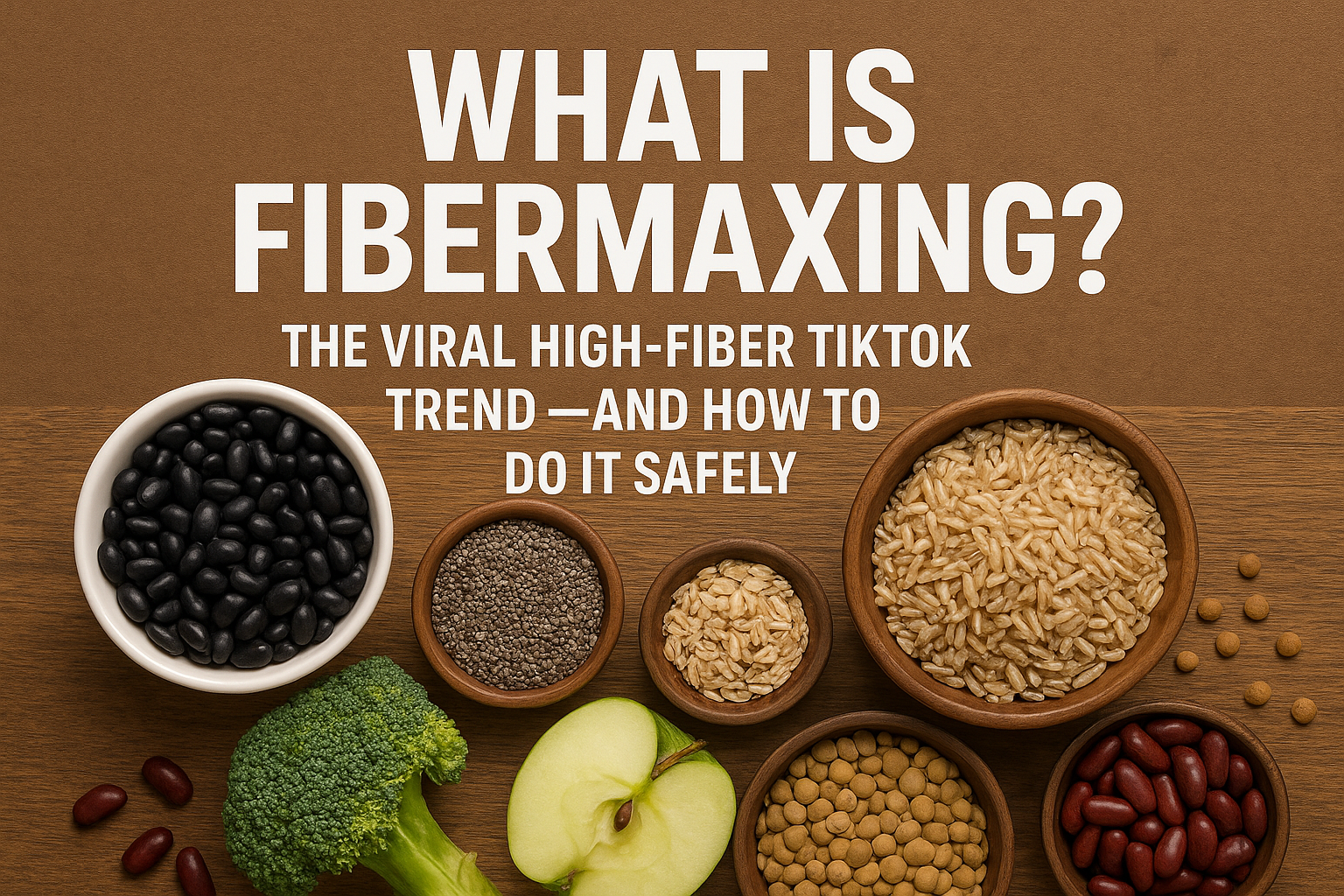In 2025, TikTok isn’t just a place for dance challenges and memes—it’s also the birthplace of the latest wellness trend: fibermaxxing. Across social media, users are boasting about massive boosts to their fiber intake with chia seeds, beans, and high-fiber smoothies.
The hashtag #fibermaxxing is racking up views, and the supplement industry is riding the wave—fiber supplements have ballooned into an $8.8 billion market, growing 15% in just two years.
But as exciting (and funny) as the trend might look online, experts warn: fiber is fantastic—but not if you max out overnight. So, what exactly is fibermaxxing, why is it so popular, and how can you do it in a healthy, sustainable way?
What Is Fibermaxxing?
Simply put, fibermaxxing is when people dramatically increase their fiber intake—often from whole foods like beans, lentils, oats, chia seeds, or fiber powders and supplements.
The idea is rooted in a genuine health gap: most adults don’t come close to meeting the recommended 25–38 grams of fiber per day. TikTok influencers claim fibermaxxing can:
- Improve digestion
- Support weight management by keeping you full longer
- Feed your gut microbiome for better health
While there’s science to back up these benefits, the trend exaggerates the “more is better” philosophy—sometimes leading to unintended side effects.
The Benefits (and Risks) of Fibermaxxing
The Pros
- Better gut health: Fiber feeds beneficial gut bacteria, which boosts immunity and digestion.
- Improved satiety: High-fiber meals help control appetite, reducing overeating.
- Heart health: Soluble fiber helps lower cholesterol levels.
- Stable energy: Fiber-rich foods prevent blood sugar spikes.
The Cons
Sudden, extreme increases in fiber can backfire. Common complaints include:
- Bloating and gas
- Abdominal cramps
- Constipation (ironically, if water intake is too low)
- Nutrient absorption issues if supplements are overused
Nutritionists caution that fiber should be added gradually—jumping from 10g to 50g in a week can leave your digestive system struggling.
How to Fibermaxx Safely: A Step-by-Step Guide
Instead of going from zero to max, follow a slow-and-steady fiber ramp-up:
- Week 1: Track your current fiber intake. Add one serving of vegetables or legumes per day.
- Week 2: Introduce high-fiber snacks—like apples, pears, or a handful of nuts.
- Week 3: Add soluble fiber sources such as oats, chia pudding, or flaxseed.
- Week 4: Incorporate more beans, lentils, and whole grains into main meals.
Pro Tip: Always drink plenty of water. Fiber works best when paired with hydration.
Fibermaxxing Foods to Try
Here’s a quick list of high-fiber foods (per serving) you can feature in meals:
- Chia seeds (10g) – Add to smoothies or overnight oats
- Lentils (15g) – Great for soups and dals
- Black beans (12g) – Perfect in salads or burrito bowls
- Oats (8g) – Breakfast staple
- Broccoli (5g) – Easy side dish
- Apples (4g) – Snack with natural sweetness
(Values are approximate per 100g.)
The TikTok Buzz: Why Fibermaxxing Went Viral
TikTok thrives on simple, dramatic health hacks—and fibermaxxing fits perfectly. Videos often show:
- “Day 1 vs. Day 7 of fibermaxxing” with side-by-side transformations
- Mega “gut health smoothies” loaded with chia, oats, and beans
- Meme-style humor around bloating or bathroom trips
Like many TikTok health trends (remember chlorophyll water or proffee?), fibermaxxing blends real science with viral exaggeration. The challenge is separating hype from healthy habit.
Beyond the Trend: Why Fiber Matters
Whether you call it fibermaxxing or just “eating more plants,” the truth remains: fiber is one of the most under-consumed nutrients worldwide.
Its benefits go far beyond TikTok clout: supporting long-term weight management, reducing chronic disease risk, and improving overall well-being.
So even if the trend fades, the message sticks—we could all use more fiber, done right.
Conclusion
Fibermaxxing may be TikTok’s latest buzzword, but at its core, it’s a reminder of something timeless: our diets need more natural, fiber-rich foods.
The key is balance—don’t max out overnight, but build fiber gradually into daily meals. That way, you will enjoy the benefits without the bloat.
So, the next time you see #fibermaxxing on your feed, take inspiration—but keep it real. Your gut will thank you.

Leave a Reply